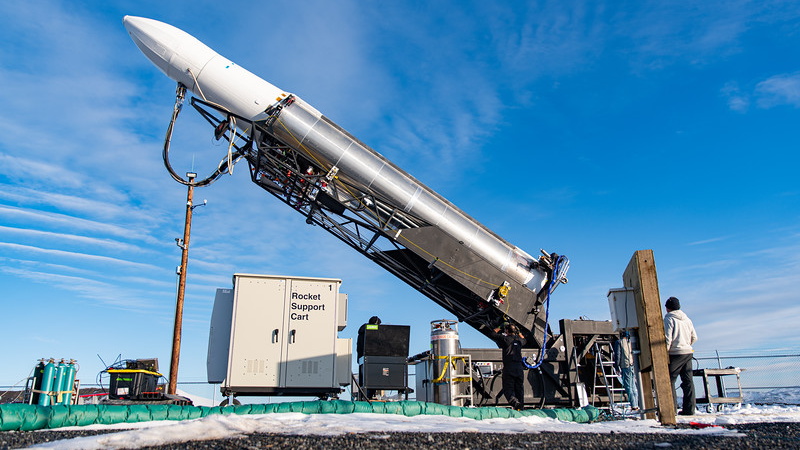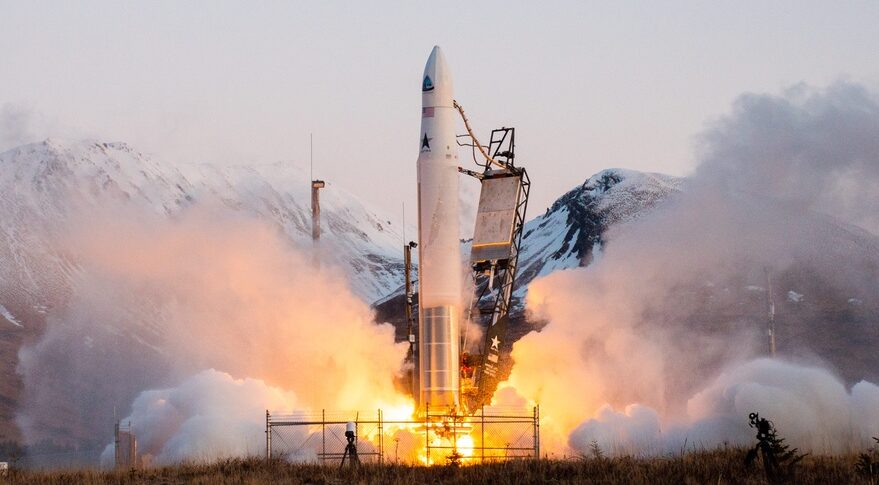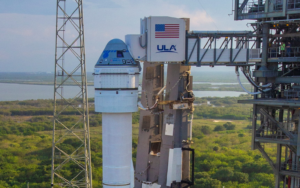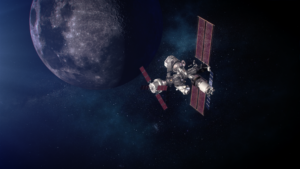
Astra’s Progress & Vision For The Future
We are not even halfway through the year and so much has happened throughout the entire space industry. It seems like each day we watch a company or agency work towards a new and ambitious goal. Astra is no exception with the company’s very impressive progress over the last few years and especially in 2022 so far.
Not long ago Astra released some information on exactly what they had accomplished so far and what they plan for the future. This includes their strategy, multiple phase approaches, and specific examples of improvements over multiple years. A rocket company has many different aspects that all need to work perfectly together in order for the goal to be a success.
Even just trying to reach orbit is a massive feat that requires many different employees and sections of the business working together very efficiently. This being said, Astra for the first time ever only months ago was able to successfully deliver a customer payload into orbit. This is just one of many other achievements and goals for the future. Here I will go more in-depth into what the company has been up to and what to expect in the coming months.
Astra’s Progress

Astra has come a very long way in a relatively short period of time, especially compared to other companies within the industry. They point out exactly what they achieved in 2021 alone. This included delivering its first commercial payload into Earth orbit, making Astra the fastest private U.S. company in history to reach this milestone, just five years after they were founded in 2016. Next, they became the first true Spacetech company to list on Nasdaq. Some other important milestones include acquiring Apollo Fusion and successfully demonstrating the operation of the Astra Spacecraft Engine in space. Growing their employee base from 99 to 324 as of December 31, 2021. They even ended 2021 with $325 million in cash and cash equivalents on hand.
Astra points out that Importantly, they are focused on delivering for its customers. In 2021, they secured contracts with a diverse range of commercial and government customers, including NASA, the U.S. Space Force, Planet, Spaceflight, and Spire Global, Inc. As of the end of 2021, they have over 50 launches under contract and a $160 million backlog, demonstrating the value of their services and the trust its customers place in them. So far this year, Astra is continuing to accelerate momentum to meet its customers’ needs. In January, NASA awarded Astra the Venture-Class Acquisition of Dedicated and Rideshare contract for future task orders, which have not yet been issued to Astra. As task orders are awarded, this represents a $300 million opportunity over the next five years. In February, they conducted Astra’s first launch out of Cape Canaveral, its second spaceport, under the very first Federal Aviation Administration (“FAA”) Part 450 license in history. And in March, Astra conducted its first successful orbital mission for Spaceflight, Inc., delivering 22 payloads to their required orbit.
In addition to this success, Astra made sure to point out that its employees are everything. The company specifically said they have been fortunate enough to attract some of the most entrepreneurial, creative, and hardest working engineers, product managers, and business leaders in the world. Astra’s success is a direct result of the dedication, productivity, and focus of each and every one of its employees. The velocity of iteration allows them to learn and improve its products as quickly as possible, so given the scope and complexity of the systems they are building, they have organized Astra into small, atomic, entrepreneurial, “start-up” like teams that are each responsible for a product, or a piece of the system.
Goals & Future

Now that we know some of the progress Astra has made in the last few years, we can take a look at where the company is headed and what to expect in the future. Astra has made it clear that they are focusing on the long term. Chris Kemp has said that, “Adam and I founded Astra because we believe the space economy is at an inflection point akin to the birth of the Internet, both in scale and opportunity, and that dramatically lowering the barrier to accessing space will create tremendous societal and economic value.” This long term focus guides Astra’s strategy, product roadmaps, and investments. This has served them well, as investments in building out its Alameda campus, including a state-of-the art production facility have allowed the company to rapidly iterate and reduce dependencies on third-party suppliers. Astra believes that a long term focus will strongly position the company to meet its customers where the market is going, and allow them to be prepared to scale to meet their needs.
We can also take a look at Astra’s strategy, the relation to its progress this past year, and its outlook for the future. With such an expansive opportunity before them, Astra realizes they need consistent focus and execution to earn the right to grow into the company they aspire to be. They are building a foundational foothold in an established, but lucrative portion of the ecosystem, launch services, that, over time, will become a strategic advantage for the company as their long-term vision unfolds. Astra’s mission of improving life on Earth from space and its vision for a healthier and more connected planet are the foundation of Astra’s strategy, which has three phases. Chris Kemp also pointed out that, when Astra went public last summer, “Adam and I shared our long-term vision for a frequent, low-cost launch system that would allow us to develop, deploy, and maintain a space services platform that would enable our customers to focus on building space applications instead of space infrastructure.” They shared a vision of a “cloud constellation” composed of spacecraft that its customers can leverage like technology companies leverage cloud computing, providing network and computing services on demand, with plugand-play hardware peripherals that could be plugged into satellites just before a launch. Astra believes that this is the future of Spacetech, and frequent access to space is the critical first step to enabling this future, making it Phase 1 of their strategy.
With hundreds of small satellite constellations in development, and over a dozen companies that have gone public, collectively raising over $20 billion in the past year, Astra sees launch as the critical enabler of not only Astra’s long-term plans, but the key enabler of these new Spacetech companies. That’s why in Phase 1 of the company’s strategy, Launch Services, they are focused on dramatically increasing access to space by scaling its launch services business as quickly as possible. However, it’s important to point out that you cannot just focus on one aspect alone. As they learned with rockets, the core technologies required to power next generation satellites are simply not available at the cost, performance levels, and production scale that Astra’s vision of the future of space requires. This is why in Phase 2, Space Technology, Astra plans to develop, license, or acquire core space technologies that will be productized and incorporated into its rockets, satellites, and other infrastructure that will be used to deliver space services. Core technologies include propulsion and solar power. The acquisition of Apollo Fusion last summer is one example of Astra acquiring and productizing a core space technology. The vast majority of value in the trillion dollar space economy forecasted in 2040 is in space services, such as communication services and a new generation of geospatial data services. Just as the apps on your iPhone are powered by cloud services here on Earth, Astra believes that future space applications will be powered by the space equivalent of today’s earthbound cloud data centers. So in Phase 3, Space Services, they plan to vertically integrate Astra’s core technologies into an Astra Constellation, which will be optimally launched and maintained by the Astra Launch System, allowing them to power the space economy.
Lastly, we can look at some specific goals the company has for the rest of 2022. Astra is confident there are significant opportunities to further reduce the material, manufacturing, and operational costs of its launch system. This year they are developing the next version of its launch system (2.0) which will incorporate the next version of its rocket (4.0). Astra’s goal is to increase its payload capacity by over 500% to deliver over 250kg to mid inclination orbits starting next year, while reducing their material, manufacturing, and operating costs. They believe there are opportunities to expand its footprint of spaceports worldwide and more. While very ambitious, Astra has made impressive progress recently and does not seem to be slowing down.
Conclusion
Over time, Astra has become a very significant player within the space industry. After a lot of success in recent months, the company recently highlighted exactly what they plan for the future and how they will achieve it. As time goes on, we will have to wait and see how it progresses and the impact it has on the space industry.



